

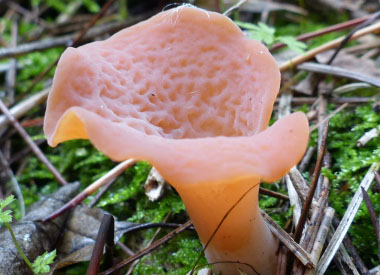
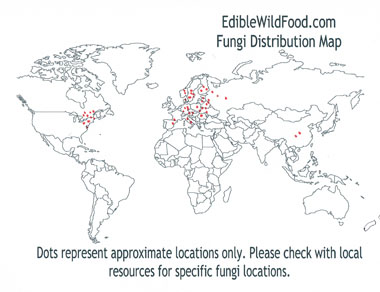
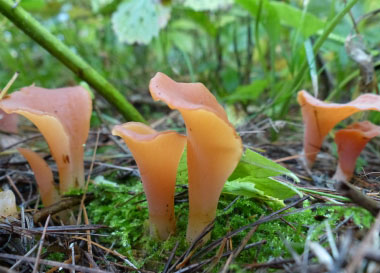

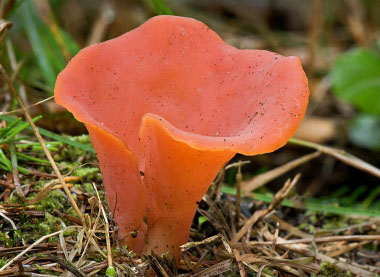
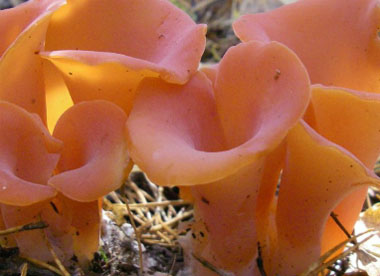
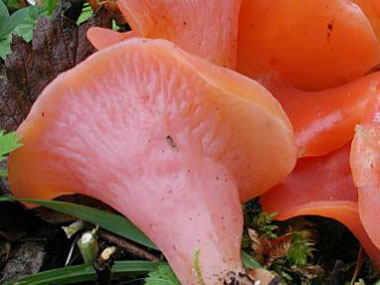
Do not eat any fungi that has not been properly identified by a qualified professional, some are DEADLY when ingested. All edible wild fungi MUST be cooked.
The apricot jelly fungi is a widespread fungus easily recognized by its unique shape, rubbery texture, and orange to salmon-pink colouration. The taxonomy has a bit of a convoluted history, resulting in many older field guides listing this species as Phlogiotis helvelloides or Tremiscus helvelloides. It is a saprobic jelly fungus that is quite unique as it dries out, yet rehydrates repeatedly as the rains come and go. Interestingly, they produce a new set of spores each time they rehydrate.
Type
Distinguishing Features
This edible fungus has a petal-like firm, yet gelatinous (sometimes rubbery) fruiting bodies that are quite easy to identify because of the shape and colour. Some people refer to their shape as being similar to a horn or a trumpet. The stem base has regions of white mycelium.
Height
Apricot jelly grows anywhere from 2 to 10cm tall (up to 4”). It can grow to 6cm (2.5”) wide.
Habitat
These fungi can be found on the edges of well-decomposed conifer forests, and rarely can be found among hardwoods. They appear either solitary or in a group. Apricot jelly typically grows on the ground or on well-rotted wood, and almost always under conifers. These can be found in several locations around the world.
Spore Print
White spore print.
Season
Apricot jelly appears in the summer months and into the autumn (also in the winter in warmer climates).
Gills
No gills.
Edibility
Some people claim this has a mild sweet taste, yet most people say it is without flavour. Although some people have eaten these raw, it is important to cook all fungi before eating.
Other Name
Candied Red Jelly Fungus.
Recipes
To support our efforts please browse our store (books with medicinal info, etc.).
Winter Survival Food Handbook

PDF Plant Magazines
Types of Wild Food
Geographic Zones Seasons
Disclaimer
EdibleWildFood.com is informational in nature. While we strive to be 100% accurate, it is solely up to the reader to ensure proper plant identification. Some wild plants are poisonous or can have serious adverse health effects.
We are not health professionals, medical doctors, nor are we nutritionists. It is up to the reader to verify nutritional information and health benefits with qualified professionals for all edible plants listed in this web site. Please click here for more information.
Why Edible Wild Food?
- Food costs are rising
- Free, wild food is readily abundant
- Wild food adds nutrition to your diet
- Wild food can help treat various medical conditions





